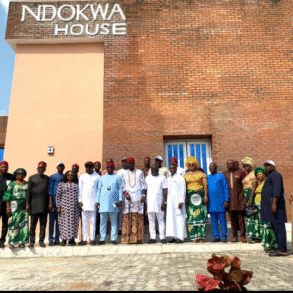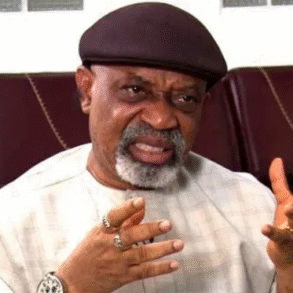The Federal Government has unveiled a bold new plan to construct modular solar power plants with a total capacity of 1,900 megawatts across Nigeria’s 19 northern states.
This move, aimed at boosting renewable energy adoption and reducing pressure on the national grid, is part of a broader strategy to enhance electricity generation and distribution nationwide.
Minister of Power, Adebayo Adelabu, announced the initiative during the sixth edition of the 2025 Ministerial Press Briefing Series held in Abuja.
According to Adelabu, each state will host a 100MW solar-powered plant, enabling greater energy independence and addressing the northern region’s recurring power instability issues, often caused by vandalism of transmission infrastructure.
“The northern region has recently suffered from major power outages. Last October, the Shiroro-Kaduna 330kV line and other vital power lines serving states like Kano, Kaduna, Bauchi, and Gombe were sabotaged, leaving 17 out of 19 northern states in darkness for weeks,” he said.
Adelabu revealed that two private firms, Sun Africa and Skipper Energy, have shown strong interest in partnering with the government.
He explained that Sun Africa plans to contribute 1,000MW of solar energy to the national grid, while Skipper Energy is leading the effort to install modular solar plants in each northern state.
“With the level of sunshine we enjoy in Nigeria, there’s no reason we can’t scale up solar power generation,” the minister said. “This partnership with private investors is a major step forward in our renewable energy drive.”
The minister set an ambitious target to generate and distribute at least 8,000MW of electricity by the end of President Bola Tinubu’s first term in 2027.
Adelabu said the country has already witnessed a 40% boost in power generation since the administration came into office.
“Daily generation rose from 4,100MW in Q3 2023 to a stable 5,800MW in early 2025,” Adelabu said. “If we sustain this momentum, reaching 8,000MW is well within reach.”
He lamented the slow progress in previous administrations, noting that Nigeria grew its generation from 2,000MW to 4,000MW over 40 years. In contrast, the current government added 1,700MW in just over a year.
“Due to limited government funding and competing priorities across ministries, Adelabu stressed the importance of private sector financing to strengthen and expand the national grid.
“With support from the Nigerian Independent System Operator, private investors are being invited to help build new transmission lines, substations, and transformers,” he added.
The national grid has seen significant improvements under the Tinubu administration. The Transmission Company of Nigeria (TCN) commissioned 61 new transformers in 2024, with nine more added in the first quarter of 2025 across key cities including Lagos, Benin, Bauchi, Oshogbo, Kano, and Kaduna.
According to Adelabu, the grid now has an operational capacity of 8,700MW—an upgrade from just a few years ago when it could not handle more than 5,000MW without collapsing.
Adelabu also announced that the long-abandoned 215MW Kaduna Power Plant is now 87% complete and will be operational by the end of 2025. The facility, originally contracted in 2009 and stalled since 2018, is finally back on track following the minister’s intervention and the President’s approval.
Adelabu said approximately 150 million Nigerians now have access to electricity, but 80 million still lack a reliable power supply. “The challenge now lies in ensuring stability and affordability. It’s not just about access, but about consistent and cost-effective electricity,” he added.
Another key development is the government’s move toward regionalising the national grid. The proposed eastern and western “supergrids” are designed to isolate faults and prevent nationwide blackouts, enhancing overall reliability.








